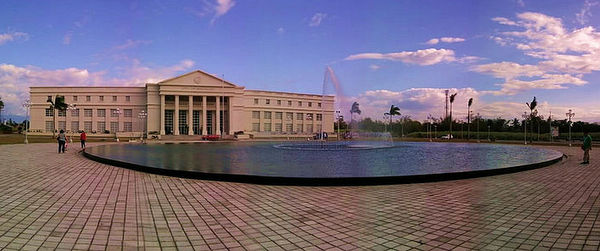
This is the last installment in my 3 part series for those who are intending to retire in the Philippines. This series of articles gives specific information to all those who are about to follow that dream! By now, you have all the information you need to acquire the needed visa to retire in the Philippines and to make your dream come true.
The Philippines has three Regions and those are Luzon, Visayas and Mindanao. Even though they are all in the Philippines, each Region has their own colorful and vibrant culture and languages, which differ one from the other. Everyone living in Luzon does not speak Tagalog as their native tongue. Everyone living in the Visayas does not speak Visayan as their native tongue and many people living in Mindanao speak Cebuano among the many different languages. The great news is, English is widely spoken in all three Regions and the major newspapers are all printed in English.
Where Will I Live When I Retire in the Philippines?
In my previous two articles in this series, I gave a few specific areas that are fabulous places to live when you retire in the Philippines. Now, you have to decide where you will live in any specific area. Will you rent, buy or build? Many expats are still not 100% decided as to where they actually want to live when they retire in the Philippines. The expats who have a Filipina wife or a Filipino husband wonder if living near relatives is a good idea. It can be a great idea because extended family members often give the much needed help on the ground when help is indeed needed. In my personal situation, my wife had not actually lived in the Philippines for almost 15 years and a lot had changed over time. Therefore, her family has been a great part of our success over the past 4 years. Some will tell you that if you live near your Filipino family, they will constantly bug you asking for money or will actually visit your home and take up permanent residence! Yes, these things have happened but only because the expat and their wife allowed it to happen! Since 2009, we have not encountered these problems.
There is certainly nothing wrong with taking your time when you retire in the Philippines. A great suggestion is to rent for the first 6-12 months and make sure that area is where you will call home permanently. People often ask me how much is rent in Bacolod City? If one can live in a Filipino style concrete house in an older subdivision, there are houses for rent for less than P5,000 per month. An average size house that is more upscale in one of the newer and modern subdivisions in the city rent for P5,000-P10,000 per month and yes, prices are sometimes negotiable. For a larger, sprawling house, expect to pay P15,000 upward to as much as P40,000 per month, depending on the location in the city and the specific subdivision.
Many house and apartment rentals require two months advance rent and and two months deposit. To keep it simple, if you rent a house that is P10,000 per month, it will cost you P40,000 to move in. Before moving in any rental, you will want to be absolutely sure that there are not any outstanding electric, gas or phone bills on the land line or you will not receive service until those past due bills are paid! The former tenant is long gone, so you could be responsible for the past due bills before you are connected to utility services. Renters Beware!
Why I Chose to Retire in the Philippines
When I decided to retire in the Philippines in 2009, my wife and I had already decided on the location we wanted and we began the process of building a new home on land that my wife already owned. For under $30,000 we were able to build and furnish a very nice and large home in the countryside, about 43 km outside Bacolod City.
We were not satisfied with the education our son was receiving in his private Christian school in the countryside, so in 2011, we found a great deal on a 90% completely built home in one of the newer Bacolod City subdivisions. The developer greatly discounted the price of the home because the previous buyer lost his overseas job and could not complete the construction on the home, which was still owned by the developer. Property tax is very inexpensive in the Philippines and costs us less than $100 per year on each home. Less than P4,000 per year! This is fabulous!
When you retire in the Philippines, it should be known that you as a foreigner cannot own land but you can own the home or you can buy a condominium and in some situations, a townhouse. Provided 60% of the other unit owners are Philippine citizens and no land is involved in the transaction.
Are you ready to follow that dream? To retire in the Philippines? It can happen quicker than you may think. You will be able to make your own daily schedule and set your own here pace. If you enjoy the beach, you can go everyday, year round! Once I decided to retire in the Philippines, my life has never been greater and I am the happiest I have ever been in my entire life! I am loving it in the Philippines!
https://www.youtube.com/watch?v=Gfu3bmhsqiM



Gary,
When you and your wife built your home in the Philippines, were you able to have running water?? And the electricity……..was that an expensive process to have electricity hooked up? How much are your monthly electric costs? Do you have a large refrigerator working/running daily? Do you run an air conditioner daily or only at night? Do you own a car? And if so, is it a large or small car? Just curious!
These are questions a lot of people would surely like to know! Thanks!
peace and love,
brian
Hi Brian,
Excellent questions! Our first step was to have a deep well drilled and then we added a large water tank with an electric motor, so we had running water from Day One.
The house next door to where we built our new house is actually also my wife’s house, which she built in 2002, so power lines were already in the area. Only a meter and power pole had to be installed and the connection to the house by the power company. The cost was less than P10,000 but that was in 2009 and in our area of Negros Occidental specifically.
Our monthly electric bills is always less than P4,000 per month and some months, it is as low as P3,100. We have a split type air con with an inverter, so it is very economical. We do not run the air con 24/7 but we do run it about 14 hours per day on average. We also use an Asahi brand fan with aerodynamic “banana” blades, which is super cost efficient. We have a large Whirlpool Ref with freezer, which is powered 24/7. We also have a large screen HDTV. I personally use a toaster oven almost daily but our main stove is LPG. A tank of LPG is P800, which will last at least 4-5 weeks but longer if not cooking so much daily.
We own an Isuzu Crosswind SUV, so it is not a small vehicle. It is diesel, which is cheaper than gasoline in the Philippines by about P10 per liter. Our mileage averages 14 km per liter of diesel since most of our driving is in the city but on trips outside the city, we average almost 17 km per liter. We keep the Crosswind serviced and in immaculate running order.
I hope you find this helpful.
Take care and have a great day!
~ Gary ~
Thanks so much, Gary, for your excellent posts and informative responses! I am truly thrilled at the prospect of moving over there to the Philippines, and am just biding my time here in America, until 2017, when we prepare for our one-way move! Take care, brother!
Hopefully, time will fly for you, Brian, and you will be moving to the Philippines before you know it!
Take care,
~ Gary ~
Oh, Gary…..on your LPG stove….you say it might last about 4-5 weeks……Does that mean that whenever it runs empty or close to empty, you just call some company and they send out a truck to refill it?? And is it cheaper to have an LPG stove as opposed to an electric stove? Just curious, because I am a chef and may be doing alot of cooking after we retire to the islands!
Also, if we go the LPG stove setup, is it possible to also have an outdoor grill hooked up to that LPG gas tank? That seems plausible and would be a good way to also cook outdoors, I would think.
I always look forward to your posts, Gary! Thanks for all you do!
peace and love,
brian
Hi Brian,
Yes, that is correct. We send a text message to the deliverer of our Gasul brand LPG and he delivers it on a trike, which is the motorcycle with sidecar. He is the same guy we have dealt with over 2 years. He brings the new tank inside our kitchen and connects it, and then he takes the empty tank back to the company for refilling. He is a good guy. I always tip him, of course. The tank is the small tank that we use and not the tall one.
LPG is cheaper to cook with than electricity. Electricity is one item in the Philippines that is not a lot cheaper than in the USA! I know guys with large houses in our area and their electric bills are more than $800 per month!
There are gas grills available in the Philippines but you would need another tank of LPG for it unless you wanted to move your kitchen tank of LPG back and forth. We use our outdoor grill often but we buy charcoal to grill with. A large sack of charcoal is only P25-P30! We had the grill custom made and it was only P1,500 at the metal works shop.
You are welcome, Brian. Take care and many blessings!
~ Gary ~
Hi We live in BC Canada and as she is from the Philippines and is in the process of building at home I was looking on the internet to get the 13a form so we could have it done before leaving here. The question can I download it as we are about 5 hours from the Philippines offices in Vancouver. Thanks and best regards Laurie